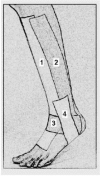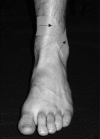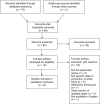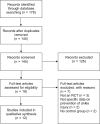Prevention of Lateral Ankle Sprains
- PMID: 31116041
- PMCID: PMC6602401
- DOI: 10.4085/1062-6050-487-17
Prevention of Lateral Ankle Sprains
Abstract
Context: Given the frequency of ankle sprains, especially in the athletic population, prevention is a primary task of athletic trainers and other sports health care professionals.
Objective: To discuss the current evidence as it relates to prophylactic programs for the prevention of ankle sprains and to provide critical interpretation of the evidence supporting and refuting the implementation of preventive programs.
Conclusions: External prophylactic supports and preventive exercise programs are effective for reducing the risk of ankle sprains in both uninjured and previously injured populations. Ankle bracing appears to offer the best outcomes in terms of cost and risk reduction. However, there remains a paucity of well-designed, prospective randomized controlled trials relevant to the primary prevention of lateral ankle sprains, especially across a range of sport settings.
Keywords: bracing; neuromuscular function; prophylactic supports; proprioception; taping.
Figures




References
-
- Gribble PA, Bleakley CM, Caulfield BM, et al. Evidence review for the 2016 International Ankle Consortium consensus statement on the prevalence, impact and long-term consequences of lateral ankle sprains. Br J Sports Med. 2016;50(24):1496–1505. - PubMed
-
- Golditz T, Steib S, Pfeifer K, et al. Functional ankle instability as a risk factor for osteoarthritis: using T2-mapping to analyze early cartilage degeneration in the ankle joint of young athletes. Osteoarthritis Cartilage. 2014;22(10):1377–1385. - PubMed
Publication types
MeSH terms
LinkOut - more resources
Full Text Sources
Medical

